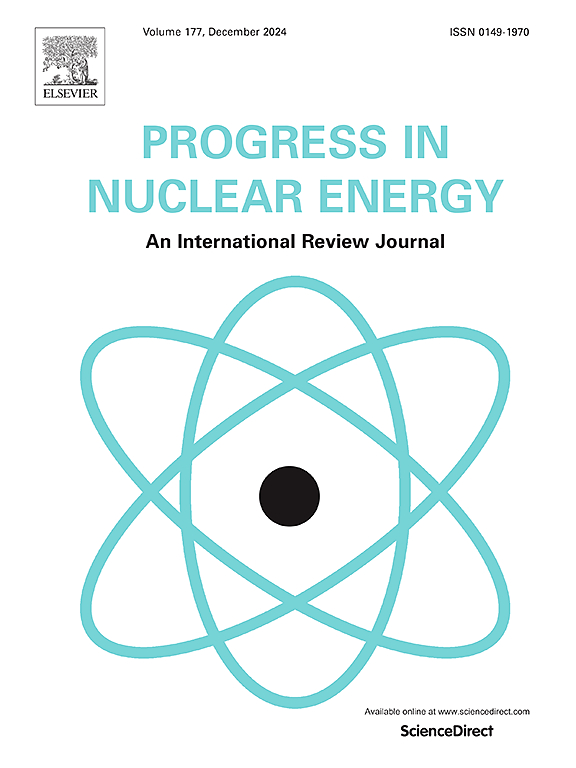Modelling and assessment of thermophysical properties of Am-bearing fuels for transmutation purposes in fast reactors
IF 3.3
3区 工程技术
Q1 NUCLEAR SCIENCE & TECHNOLOGY
引用次数: 0
Abstract
Minor Actinides (MAs) are produced inside nuclear reactor fuels under irradiation and are responsible of large part of the waste radiotoxicity. Partitioning and Transmutation (P&T) is identified as the strategy that can relax constraints on geological disposal, since transmutation of MAs via critical or subcritical fast spectrum irradiation facilities like MYRRHA is a valid path to reduce the waste hazard. One of the focuses of the PATRICIA Project is the development of fuel performance codes towards Am-bearing fuels and the computational study of their behaviour under irradiation, supporting the licencing and development of advanced designs of the MYRRHA reactor. This work focuses on the modelling of thermophysical properties of transmutation-type fuel concepts for fast reactor application, specifically of melting temperature, specific heat capacity and thermal conductivity of (U,Pu,Am)O and (U,Am)O. The modelling activity involves the latest atomic-scale/CALPHAD data on Am-bearing fuels achieved in the framework of PATRICIA. Developed models are verified and validated against separate-effect data, and implemented in the TRANSURANUS fuel performance code to simulate a past irradiation experiment (HEDL P-19 power-to-melt transient test) for the evaluation of the impact of new models on the pin performance and their integral validation.
求助全文
约1分钟内获得全文
求助全文
来源期刊

Progress in Nuclear Energy
工程技术-核科学技术
CiteScore
5.30
自引率
14.80%
发文量
331
审稿时长
3.5 months
期刊介绍:
Progress in Nuclear Energy is an international review journal covering all aspects of nuclear science and engineering. In keeping with the maturity of nuclear power, articles on safety, siting and environmental problems are encouraged, as are those associated with economics and fuel management. However, basic physics and engineering will remain an important aspect of the editorial policy. Articles published are either of a review nature or present new material in more depth. They are aimed at researchers and technically-oriented managers working in the nuclear energy field.
Please note the following:
1) PNE seeks high quality research papers which are medium to long in length. Short research papers should be submitted to the journal Annals in Nuclear Energy.
2) PNE reserves the right to reject papers which are based solely on routine application of computer codes used to produce reactor designs or explain existing reactor phenomena. Such papers, although worthy, are best left as laboratory reports whereas Progress in Nuclear Energy seeks papers of originality, which are archival in nature, in the fields of mathematical and experimental nuclear technology, including fission, fusion (blanket physics, radiation damage), safety, materials aspects, economics, etc.
3) Review papers, which may occasionally be invited, are particularly sought by the journal in these fields.
 求助内容:
求助内容: 应助结果提醒方式:
应助结果提醒方式:


